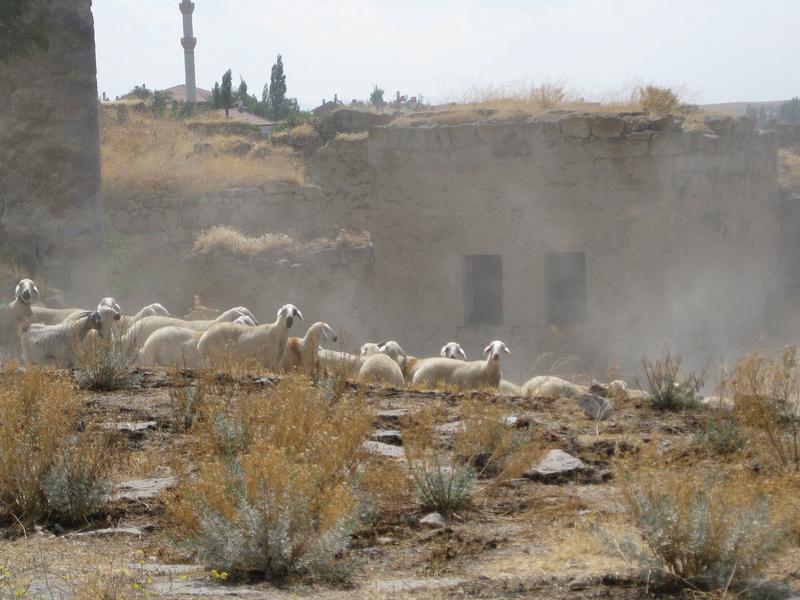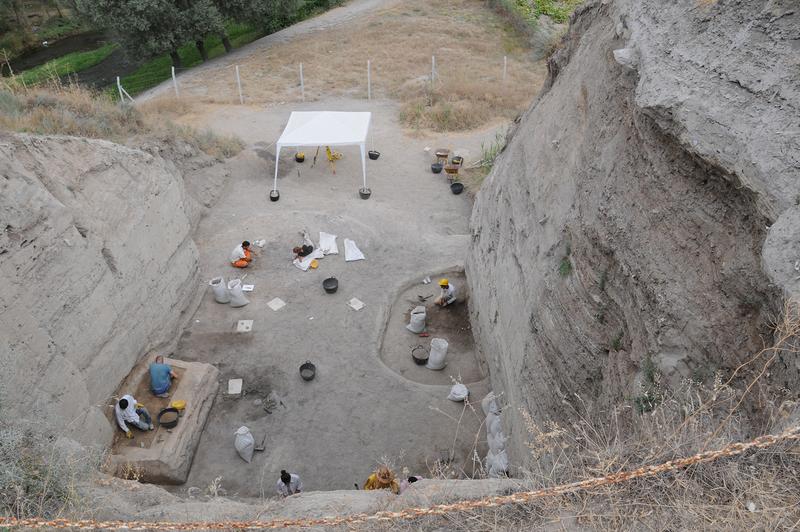April 12, 2024 20:30
Various scientific news/publications, research results
When sheep husbandry developed in the early Neolithic, sheep mitotic diversity did not decline in the wild sheep range of Anatolia. As previously assumed, 10,000 years ago. SNSB and LMU zooarchaeologist Professor Joris Peters and his collaborators were able to show that maternal diversity remained high during the first 1,000 years of human interference with captive sheep rearing and breeding, before declining significantly in the late Neolithic. Their findings were published in the journal Science Advances.
Modern Eurasian sheep mainly belong to two so-called genetic maternal lineages inherited via ewes. Therefore, previous studies hypothesized that genetic diversity must have declined rapidly during the early stages of wild sheep domestication. Our study of a series of complete mitochondrial genomes from the early domestication site of Askl Hyk in central Anatolia (inhabited between 10,300 and 9,300 years ago) refutes this hypothesis: despite millennia of human interference with sheep husbandry and reproduction, But mitochondrial genome diversity remains always high, with five maternal lineages confirmed, including one previously unknown. The continued high diversity of maternal lineages observed during 1,000 years of sheep farming was unexpected by the researchers.
“At Akl Hyk, there are both pen-raised sheep and wild sheep hunted by local residents. We hypothesize that the occasionally managed flocks are supplemented by native wild sheep when necessary, for example, to compensate for disease or stress in captivity. damage caused by the South.
Different maternal lines or haplogroups are similar to branches of a family tree. Individuals belonging to a specific lineage show relatively little variation in the mitochondrial genome because they descend from a common female ancestor. Today, haplogroup B is dominant in sheep in Europe, while haplogroup A is dominant in East Asia. Thus, the question of a decline in mitochondrial genome diversity late in the domestication process or when Neolithic sheep farming expanded beyond the original domestication area remains unanswered to date.
To address this question, an international research team led by Professor Joris Peters from the State Museum of Palaeoanatomy in Munich (SNSB-SPM), Professor Ivica Medugorac from the Department of Animal Population Genomics at LMU Munich, and Professor Dan Bradley from the Smurfit Institute of Genetics at Trinity College Dublin. The maternal relationships and phylogenetic relationships of 629 modern and ancient sheep from Eurasia were studied.
Comparing Akl Hyk’s results with ancient DNA signatures in archaeological sheep bones from Anatolia and surrounding areas, as well as later settlements in Europe and Central Asia, clearly shows that mitochondrial genome diversity declined significantly nine millennia ago. One result is the dominance of the previously mentioned matrilineal B family in Europe. “We can now hypothesize that this development was due to a so-called ‘bottleneck’ that occurred in the late Neolithic, when sheep farming expanded beyond the natural range of wild sheep following the early domestication of the species. This bottleneck may be related to The so-called founder effect, whereby smaller flocks of sheep continued to disappear from already greatly reduced herds during the spread of small-scale livestock farming to Europe,” continues Peters.
“Particularly fascinating are the insights gained by integrating genetic and archaeological data sets. Coupled with the vast number of other mosaic fragments collected over decades by zooarchaeologists, archaeologists and geneticists, since the last Ice Age An increasingly coherent picture of human cultural adaptation now emerges,” Professor Ivica added. Medugolak.
Scientific partners:
Professor Dr. Joris Peters
SNSB – State Collection of Palaeoanatomy, Munich (SNSB-SPM)
LMU Mnchen, teaching of paleoanatomy, domestic studies and medical research
Phone: 089 2180 5711
Email: peters@snsb.de
Original publication:
Edson Sandoval-Castellanos et al. Ancient mitochondrial genomes from pre-Pottery Neolithic central Anatolia and the impact of late Neolithic bottlenecks on sheep (Ovis aries).
science. 10th edition, eadj0954(2024). DOI:10.1126/sciadv.adj0954
https://doi.org/10.1126/sciadv.adj0954
Vettel information:
https://www.snsb.de – National Nature Archive Bayern (SNSB)
https://spm.snsb.de – Staatssammlung fr Paloanatomie (SNSB-SPM)
#insight #genetic #bottlenecks #early #Neolithic #sheep #herding
Image Source : nachrichten.idw-online.de

